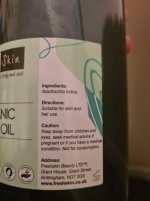RoadManDenDron
Chumono
I have read the fantastic resources on winter washes but have a question I don't think is covered
Do I still use neem oil on pines and junipers? As an insecticide in autumn.
also I'm not sure I trust my neem oil, it says its pure organic neem but it's dark like brown and liquid all the time where I'm used to yellowish and solid at room temp
The one I have is a beauty product I believe.


I do have systemic insecticide would this have the same effect?
Do I still use neem oil on pines and junipers? As an insecticide in autumn.
also I'm not sure I trust my neem oil, it says its pure organic neem but it's dark like brown and liquid all the time where I'm used to yellowish and solid at room temp
The one I have is a beauty product I believe.


I do have systemic insecticide would this have the same effect?



